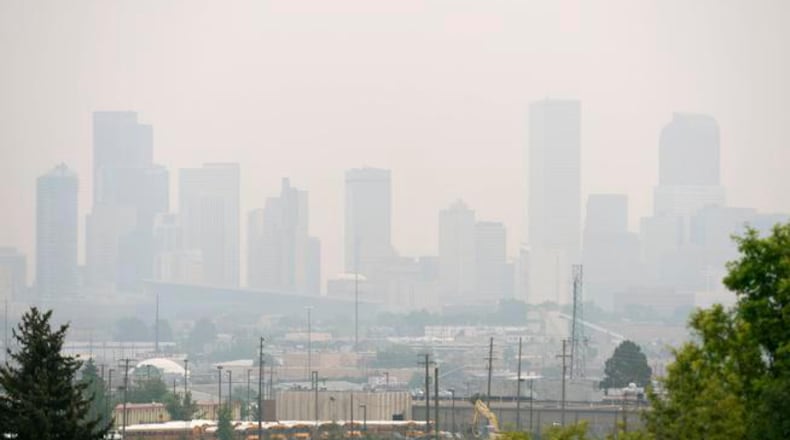For all the images of ski resorts and snow-capped peaks, Colorado is experiencing shorter winters and hotter summers that are increasingly putting people at risk for heat-related illnesses. Yet until this year, the National Weather Service hadn’t issued a heat advisory for the Denver metropolitan area in 13 years.
That’s because the heat index commonly used by the weather service to gauge the health risks of hot weather relies on temperature and humidity. Colorado’s climate is so dry that reaching the thresholds for that kind of heat advisory is nearly impossible.
But this year, the National Weather Service in Colorado adopted a prototype heat warning index, known as HeatRisk, that is used in California and other parts of the Western U.S. and relies on local climate data to determine how much hotter than normal the temperature will be and what the hazards could be to people.
The result is a more defined standard for warning people about heat and a higher likelihood that an advisory will be issued in Denver and other areas of the state.
Since adopting the HeatRisk index at the start of the year, the weather service has issued five heat advisories for the northeastern part of the state.
“We have never been able to issue them based on the old ways of looking at heat impact,” said Paul Schlatter, sciences and operations officer with the National Weather Service in Boulder. “Now with HeatRisk, it’s much easier. It shows up really nicely and gets to the real impact for Colorado.”
On July 18, for example, Denver had a high temperature of 100 degrees and a relative humidity of 13%. That put the traditional heat index at 94 degrees, below the threshold for a heat advisory, Schlatter said.
But the heat was high enough under the new system to issue a heat advisory.
The Boulder weather service office started evaluating the HeatRisk index three years ago and found that emergency room admissions for heat-related illnesses tended to increase on the same days that the index indicated high risk. However, that data may underestimate the true health impact of extreme temperatures because heat can exacerbate other conditions, such as kidney disease or diabetes, that aren’t counted in heat illness numbers. And research has shown that mental health conditions can flare during hot weather.
According to the Centers for Disease Control and Prevention, heat leads to more than 67,000 emergency room visits, 9,000 hospitalizations, and 700 deaths each year in the U.S. Extreme heat kills more Americans than any other type of weather hazard.
“People see heat as more of a nuisance,” said Kimberly McMahon, public weather services program manager for the National Weather Service.
“The biggest challenge — no matter what index we’re using — is having people recognize that heat is dangerous and can lead to death.”
KHN (Kaiser Health News) is a national newsroom that produces in-depth journalism about health issues. This story is distributed through the Tribune Content Agency.
About the Author
Keep Reading
The Latest
Featured


